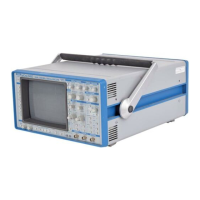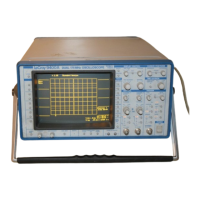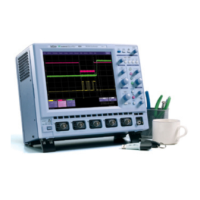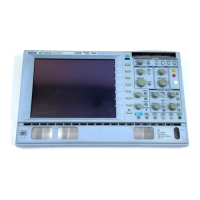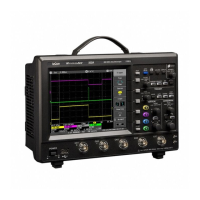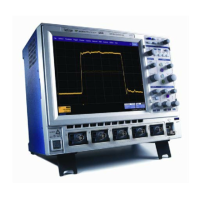7–1
7
Timebase Modes and Setup
Timebase Sampling Modes
Depending on the timebase, any of three sampling modes
can be chosen: Single-Shot, Random Interleaved Sampling
(RIS) or Roll Mode. Furthermore, for timebases suitable for
either Single-Shot or Roll Mode, the acquisition memory
can be subdivided into user-defined segments to give
Sequence Mode. Channels can also be combined to boost
sample rate and record length.
Single-Shot Single-Shot is the digital oscilloscope’s basic acquisition
technique and other timebase modes make use it.
An acquired waveform consists of a series of measured voltage
values sampled at a uniform rate on the input signal. The
acquisition, a single series of measured data values associated
with one trigger event, is typically stopped at a fixed time after
the arrival of the event, this being determined by the trigger
delay. The time of the trigger event is measured using the
timebase clock. The horizontal position of a waveform is
determined using the trigger event as the definition of time zero.
Waveform display is also carried out using this definition.
Because each channel has its own ADC, the voltage on each
input channel is sampled and measured at the same instant.
This allows very reliable time measurements between different
channels.
Trigger delay can be selected anywhere within a range that
allows the waveform to be sampled from well before the trigger
event up to the moment it occurs (100 % pre-trigger), or at the
equivalent of 10 000 divisions (at the current time/div) after the
trigger.
For fast timebase settings the ADCs’ maximum single-shot
sampling rate is used (on one and each channel, with higher
sampling rates achieved by combining channels — see page
7–4). For slower timebases, the sampling rate is decreased and
the number of data samples maintained. (See Appendix A for
details).
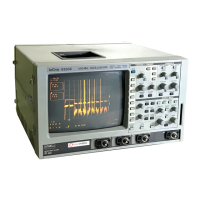
